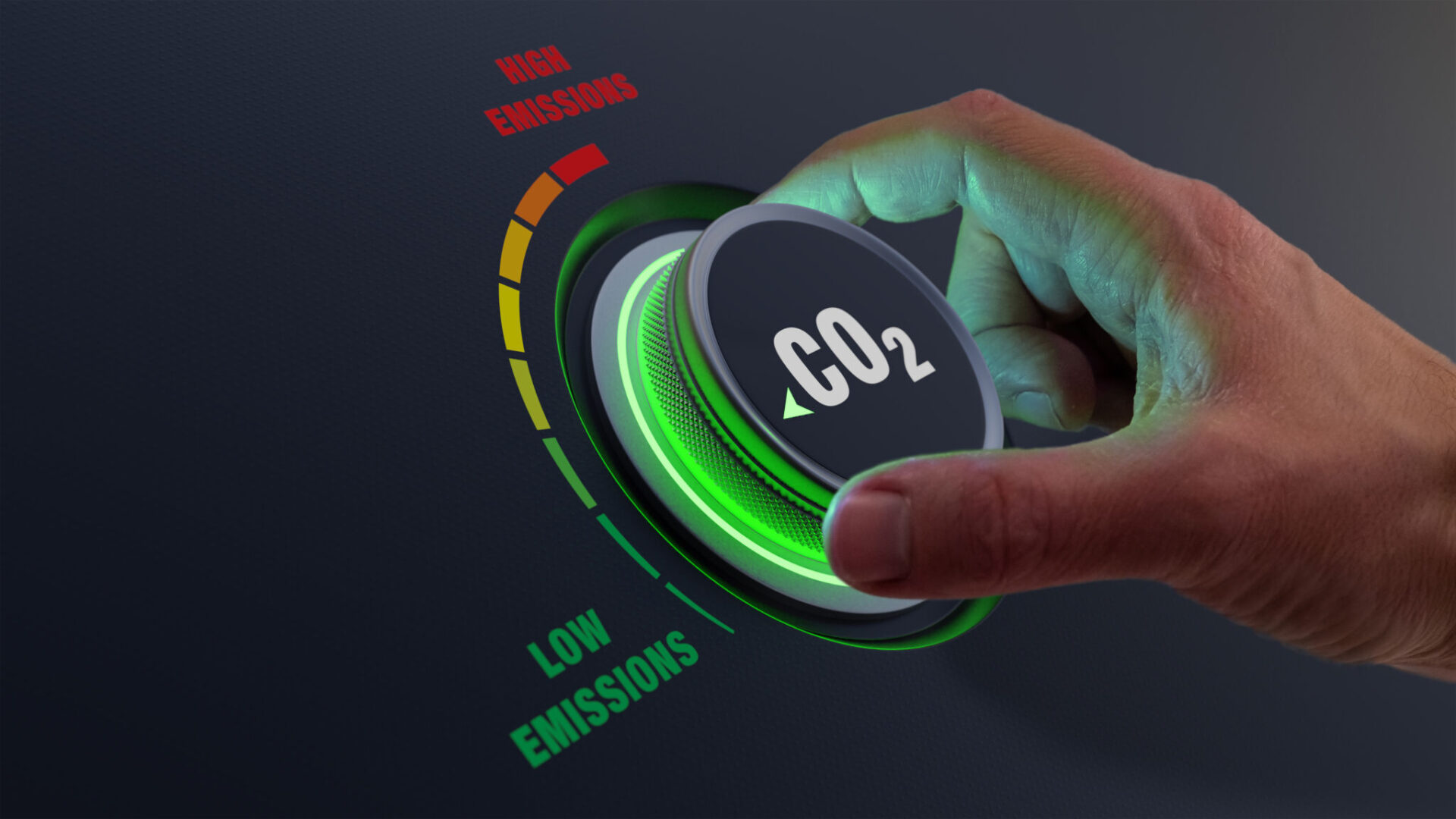By: John Hyde, Senior Sustainability Manager
The healthcare industry is a significant contributor to climate change, and it must reduce its energy demand and decarbonize. Increasing energy efficiency and transitioning away from fossil fuels has many advantages, including reduced operational costs, lower carbon footprint, reduced environmental impact and fewer adverse health effects on surrounding communities and the atmosphere.
Improving the energy efficiency of healthcare facilities will help offset rising energy costs and improve resilience in these uncertain times. Decarbonizing healthcare is challenging, and it takes careful planning and collaboration from all stakeholders.
Assessing the impact
The healthcare sector accounts for nearly 8.5 percent of U.S. greenhouse gas emissions, according to the U.S. Department of Health and Human Services. Much of these emissions result from source energy that is produced offsite, like electricity, that powers HVAC and lighting systems, critical backup infrastructure and medical equipment.
But emissions from site-generated energy, such as natural gas combustion for heating and emergency power generation, and transportation emissions from employee and patient travel also create localized pollution and harm air quality.
Understanding energy use
Healthcare facility managers can start the decarbonization process by performing a greenhouse gas inventory to establish a baseline operational carbon footprint and benchmark progress. Consider following the Greenhouse Gas Protocol for tracking and reporting emissions because it’s the most widely recognized standard. Another acceptable standard is the U.S. Environmental Protection Agency’s Scope 1, 2 and 3 guidelines.
Next, managers should complete a building enclosure analysis to determine its condition. Is the air barrier continuous, or are there gaps? Air barriers allow intentional airflow control, keeping conditioned air inside the building and unconditioned air out. Holes in the air barrier allow uncontrolled air to pass through the building enclosure.
Air infiltration can carry unwanted moisture, pollutants and allergens into facilities, increasing the energy needed to control indoor air temperature, humidity and ventilation for comfort and health. Controlling air infiltration is essential for reducing energy loads and maintaining healthy indoor air quality (IAQ). An infrared camera can help technicians identify leaks, thermal bridges and insulation gaps.
Strategies to cut demand
It is best to reduce energy demand before electrifying a building. This process lowers the operating budget, reduces operational carbon emissions and minimizes heating and cooling loads. Managers can reduce energy demand by improving the building enclosure. An extensive renovation of the building enclosure might not be feasible, given the 24/7/365 operation of healthcare facilities. Instead, managers should look for opportunities to upgrade the enclosure when performing renovations. New windows, roofing, air sealing and insulation can result in long-term savings while improving occupant comfort.
Managers also should consider engaging an experienced engineer to help plan for the transition from fossil fuels. Develop a comprehensive electrification plan, keeping in mind phasing requirements and impacts on ongoing operations.
It is not necessary to replace all the equipment at once. Keep existing fossil fuel-fired equipment in place until the end of its useful life. When a piece of equipment is no longer serviceable, replace it with electric equipment.
When replacing end-of-the-line equipment, ensure it will work with lower-temperature water supplied by an air or ground source heat pump instead of a boiler. When gas-fired boilers need replacement, switch to electric boilers or staged heat pumps. When renovating a portion of the building, bring in fresh air and exhaust ductwork that can tie into an energy recovery ventilation system.
Managers also should survey existing equipment and consider retrocommissioning HVAC equipment and systems to validate their functional performances. Review the sequences of operation, air flows, set points and setback periods to make sure they align with current needs.
Prepare for electrification
Next, managers should communicate with the local utility provider to let them know the facility will need additional power. Electrical grid demand is increasing exponentially as power generation is shifting away from fossil fuels towards renewable energy. The distribution infrastructure is being revamped to accommodate increased electrical demands from electric buildings and vehicles. Service upgrades in an area could take several years, so it’s prudent to ensure that sufficient power will be available when the facility needs it.
With rising energy prices, many healthcare facilities are installing battery-storage systems. Purchased energy is stored in onsite batteries during off-peak hours when energy pricing is lower and deployed to the building during peak demand hours, avoiding peak energy pricing. Using battery storage and load shifting reduces electricity bills, helps with grid resilience and reduces peak demand emissions.
The cost of solar photovoltaics has plummeted in recent years, and incentives are available. If conditions allow, install a behind-the-meter, ground- or building-mounted solar array. Payback periods are short, due to the avoided electricity purchase and incentives. In some cases, tax and solar renewable energy credits are available to accelerate the payback period.
Implementing decarbonization
Decarbonizing and reducing energy demand in healthcare facilities is a complex challenge that requires careful planning. Implementation takes time — in some cases, a decade or more. So it’s essential to develop a plan, get buy-in from stakeholders, make it public, and act on it now.
Circumstances are likely to change and impact the plan. Building codes are evolving, carbon taxes are being implemented, new technologies are emerging, grid electricity might be harder to obtain, and energy prices are changing. Because of these variables, managers need to allow for flexibility in the plan and adapt as needed.
Managers also need to effectively communicate the plan to everyone who might have a part in its success – administrators, doctors, facility personnel, local community partners and even patients. It is critical to keep making progress, even if the plan isn’t perfect. The healthcare industry must work together to mitigate climate change and preserve the planet.


